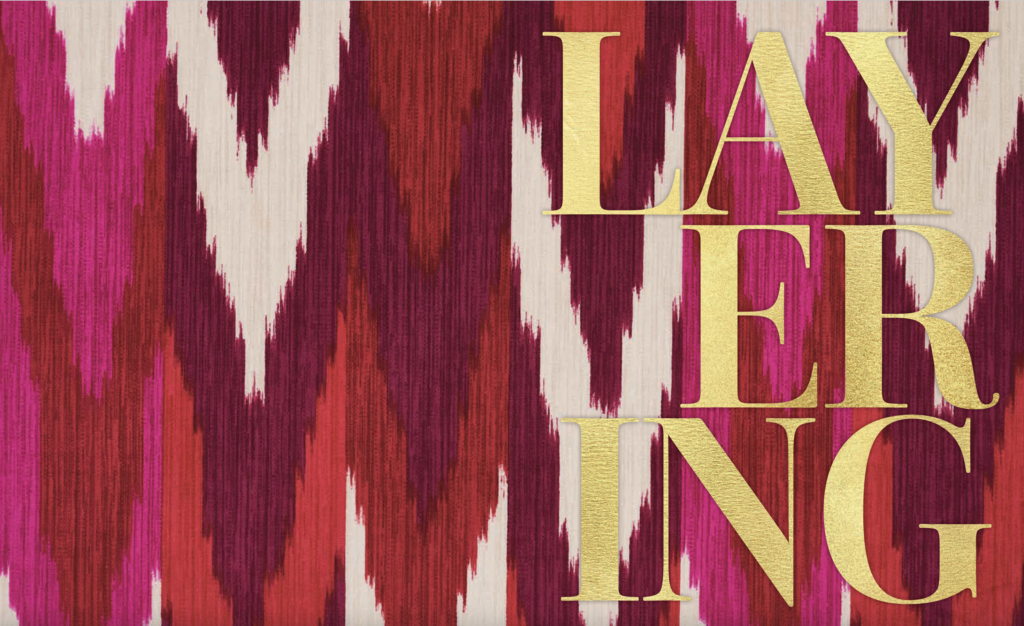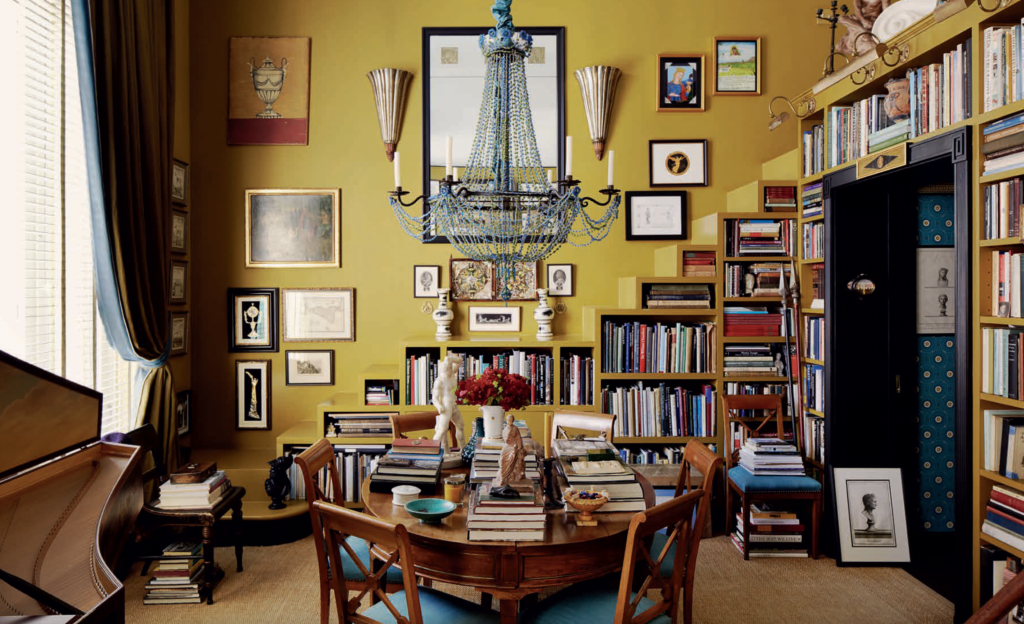
Layering ~ From the book More Is More Is More: Today’s Maximalist Interiors
© Carl Dellatore, September 27th, 2022. Rizzoli New York
As the title of this book suggests, “more is more” is the ethos of maximalism, and layering is the best implement in a designer’s toolbox to achieve maximalist flair. Color, finishes, materials, furnishings, and organic elements create rooms that have a larger maximalist impact than the sum of their parts. Think of it like a musical composition: each instrumental layer adds to the richness of a piece. When violins, cellos, clarinets, drums, flutes, oboes, saxophones, and French horns combine, they build toward an exhilarating crescendo as exciting as the rooms in this chapter.
But there is one important clarification: not every layered room can be considered maximalist. For example, rooms conceived around neutral color schemes with nuanced textures and quiet, luxurious furnishings may be rich in supremely sophisticated layers and yet not over the top in any way.
While not every layered room is maximalist, nearly every maximalist room is layered. In fact, the more richly layered a space, the more maximalist it becomes. The rooms in this book explode with such enthusiasm, exuberantly telegraphing the creativity of the designers behind each space.
Collected interiors reveal themselves in stages and over time as the eye establishes relationships between parts of an interior. These include the finishes in a room, like wallpaper, paint, wood, stone, textiles, and passementerie.
Then textures begin to appear as more complex layers reveal themselves: the coarse grain of rough-hewn walnut used in a shiplap wall treatment, the sheen of the highly polished marble top on a brass-framed coffee table, the chunky comfort of lush chenille upholstered onto a headboard.

As the eye travels around a room, we perceive elements in slightly larger groups: the massed decorative pillows positioned on upholstered pieces astride patterned rugs, or lacquered walls punctuated by luxurious window treatments and a handsome, geometric hand-stenciled floor.
Plants add another layer—either singularly, like the large-scale rich green leaves of a fiddlehead fig tree, or in concert with one another, like a pair of Boston ferns on pedestals near a spiky Christmas cactus in full riotous bloom.
Collections play a key role in maximizing rooms. A dozen tall Murano glass vases in differing hues would command attention on a center hall table, but their impact is enhanced even more by an assortment of Moroccan marquetry boxes interspersed with antique candlesticks.
Books are a valuable component of any layered room; they imbue a space with a certain sense of knowledge while revealing the interests of the home’s inhabitants. When grouped with other personal mementos, such as generations of family snapshots in silver picture frames or seashells gathered from an annual sojourn to a much-loved beach, a family’s history is revealed on the shelves.
Ask any of the designers represented in these pages, and they’ll surely tell you that when a maximalist room is layered correctly, it feels effortless—despite the skill it took to create—with each finish, material, furnishing, and object in equilibrium. It’s the secret sauce of decorating. Like the pieces of an elaborate jigsaw puzzle, a maximalist room comes into focus when every piece, every loop and socket, is connected and in its place.